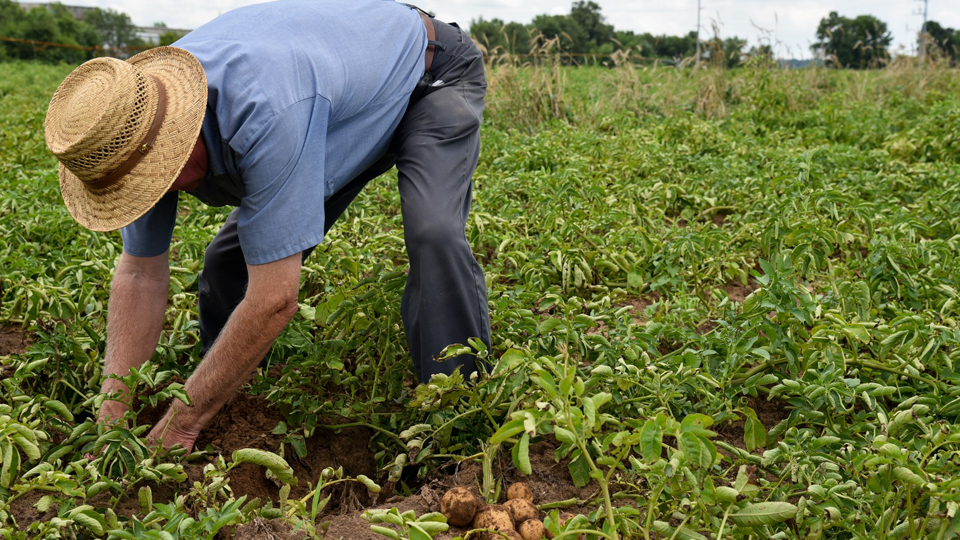Indiana farmers battle production cost spikes
Subscriber Benefit
As a subscriber you can listen to articles at work, in the car, or while you work out. Subscribe Now
INDIANAPOLIS - Facing steep increases in food production costs, Indiana farmers warn that consumers are likely to see continued price jumps at stores later this year.
Surging fuel costs, along with higher prices for seeds, packaging, animal feed, fertilizer and other chemicals, has meant “every pass across a field” is more expensive, said Andy Tauer, executive director of public policy for the Indiana Farm Bureau.
He said the main drivers of the increases stem from inflation, global supply chain issues caused by Russia’s invasion of Ukraine and lingering disruptions brought on by COVID-19.
“Some farmers are looking at any opportunity to cut costs so they can continue to maintain a healthy bottom line,” Tauer said. “But at the end of the day … those cost increases will ultimately get passed on to the consumer.”
Because farmers rely heavily on diesel-powered machinery and semi-truck transportation, David Hardin, who manages Hardin Farms near Danville, said rising fuel costs have become a significant out-of-pocket expense.
While some farmers were able to lock in fuel prices before the Ukraine invasion – and in advance of planting spring crops — Hardin said those deals won’t last. With the cost of diesel up $2 a gallon compared to earlier this year, he said that translates to even higher costs for both crop and livestock farmers who will need to purchase more fuel in the coming months.
“This is not going to be a situation that resolves itself quickly,” Hardin said. “As we move through the summer and into the fall, which honestly, for us, we use more fuel during the harvest season than we do for planting, this will impact us.”
Increased fertilizer costs
Major price increases for fertilizer have been the biggest hit to farmers so far, he continued.
For Hardin, nitrogen fertilizer, which many Indiana farmers depend on for corn crops, costs roughly double than it did last year. Fertilizers he’s purchased containing phosphorus — a key ingredient in many animal feeds — have increased by about 50%.
Tauer said fertilizer prices across the board are up for all farmers, between 300% and 500%.
He added that an increasing number of Hoosier farmers have adopted no-till practices to keep nutrients in the soil — decreasing the need for as much fertilizer.
Overall, most farmers in the state have cut back on how much fertilizer they lay out for their crops in some way, Tauer continued, although Hardin noted they walk a fine line in doing so.
“You don’t want to leave yourself short to where you’re not going to be able to maximize your yield in those fields,” Hardin said. “Our costs are up substantially. I don’t think there’s any way that we’re not going to see this translate into food price inflation of some sort or another.”
Higher prices for consumers
The consumer price index rose 8.6% in May compared to a year ago, according to the U.S. Bureau of Labor Statistics. Over that time, food prices jumped 10.1%.
Still, Indiana Farm Bureau noted that food prices in the Hoosier state have remained slightly lower than the U.S and Midwest averages.
Tauer said Indiana Gov. Eric Holcomb’s plan to trigger a second wave of tax refund payments could help, but emphasized that “nobody can foresee how long we’re going to be experiencing these high prices.”
“(The tax refund) will be good for our consumers. It’ll give us a nice bump,” Tauer said. “I just don’t think any of us know what the long term impacts are and how high, and how long, the prices will remain high.”
Indiana lawmakers won’t reconvene for a special legislative session to consider the refund until late July, however, meaning taxpayers won’t see refund checks for several more months.
In the 2023 legislative session, the Indiana Farm Bureau plans to prioritize the “ever-rising inflationary challenges,” Tauer said. They’ll also push for lawmakers to maintain “a reliable and affordable energy system” and a tax system that isn’t “over burdensome,” which he said will ensure that rural communities remain “viable,” despite economically challenging times.
In the meantime, Hardin said Indiana farmers are eager to find cost-saving solutions that allow them to maintain profits, but won’t hurt consumers’ pocketbooks.
“You can never plan for a black swan event,” Hardin said. “You can try and have contingency plans in place to deal with those kinds of events when they happen, but we’re not used to having two or three large shocks to the economic system, coming from different directions, all at the same time.”
